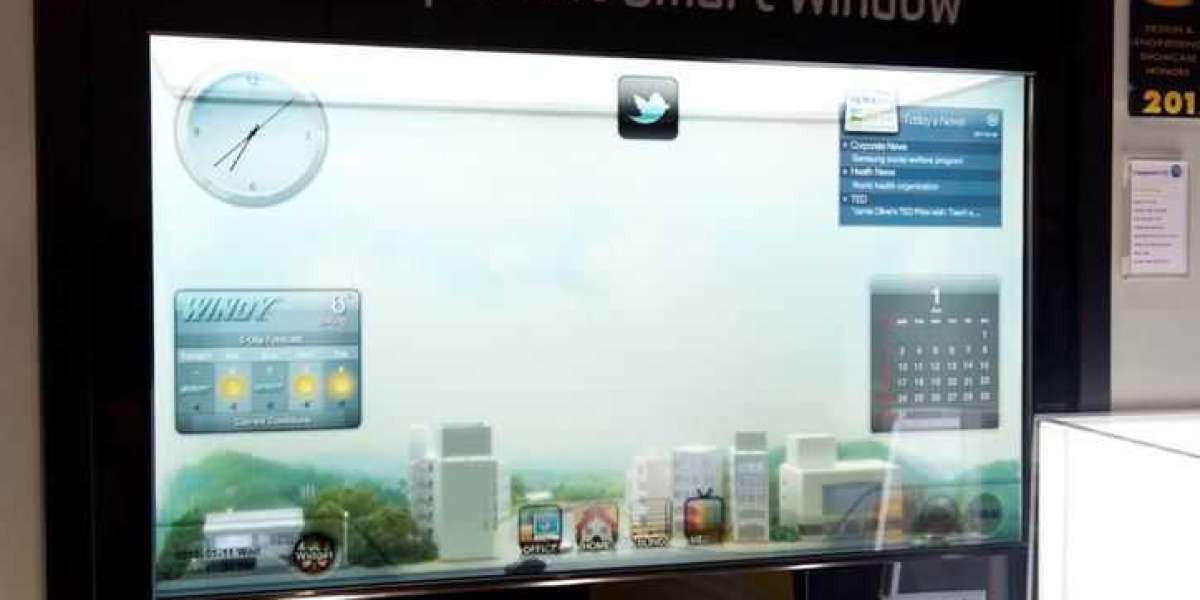Market Research Future Insights
The global smart window market will reach USD 2,870.6 million at a favorable 17.8% CAGR by 2025, states the latest Market Research Future (MRFR) report.
Smart windows are highly favored for its alluring features that may boost market growth. These features include easy to clean, reduction of cost for air conditioning, and more durable over conventional glasses as well as block UV light. The increasing installation of smart windows in electric vehicles will offer robust opportunities for the market over the forecast period. With a decrease in the A/C load, EVs can extend their travel distance too.
The lack of awareness about smart windows and durability issues may act as market restraint over the forecast period. The unavailability of material costs, high installation cost, and increasing electricity costs may act as market challenge over the forecast period.
Industry/ Innovation/ Related News
January 22, 2021 – GM unveiled technologies for its upcoming Cadillac Celestiq sedan, to be released in 2023. The flagship EV is expected to help the brand recapture its reign as the Standard of the World. These roofs, dubbed SPD-Smartglass/window, have been designed and manufactured based on suspended particle device (SPD) technology, originally designed to replace manual sliding window shades aboard commercial aircraft.
Free Sample Copy - https://www.marketresearchfuture.com/sample_request/9595
Key Players
Eminent industry players profiled in the global smart window market report include Saint-Gobain Group (France), RavenWindow (US), PPG Industries, Inc. (US), LTI Smart Glass, Inc. (US), Kinestral Technologies, Inc. (US), Gentex Corporation (US), Merck KGaA (Germany), Pleotint, LLC (US), E-Chromic Technologies, Inc. (US), ChromoGenics AB (Sweden), AGC, Inc. ( Japan), Hitachi Chemical Co., Ltd (Japan), Nippon Sheet Glass Co., Ltd (Japan), and Innovative Glass Corporation (US), among others.
Introduction:
In recent years, the smart window market has witnessed remarkable growth due to the increasing demand for energy-efficient solutions and the rapid advancement of smart technologies. Smart windows, also known as switchable windows or dynamic glazing, have the ability to regulate the amount of light, heat, and glare entering a building, resulting in enhanced comfort, improved energy efficiency, and reduced costs. Market Research Future (MRFR) has conducted an in-depth analysis of the smart window market, revealing fascinating insights and future prospects for this rapidly evolving industry.
Key Market Trends:
- Growing Demand for Energy-Efficient Solutions: In an era of increasing environmental consciousness, the demand for energy-efficient solutions is on the rise. Smart windows have emerged as a viable option to optimize energy consumption in both residential and commercial buildings. By automatically adjusting the amount of light and heat entering a building, smart windows reduce the reliance on artificial lighting and air conditioning systems, leading to significant energy savings.
- Technological Advancements Driving Market Growth: The integration of advanced technologies, such as electrochromic, thermochromic, and photochromic materials, has revolutionized the smart window industry. Electrochromic windows, for instance, use electrical signals to change the tint of the glass, allowing users to control the level of transparency. Similarly, thermochromic windows respond to temperature changes, while photochromic windows alter their shading in response to UV light. These technological advancements have expanded the range of applications for smart windows and propelled market growth.
- Increasing Focus on Sustainable Construction: With the rising global emphasis on sustainable construction practices, smart windows have gained significant traction in the building industry. Green building certifications, such as LEED and BREEAM, encourage the use of energy-efficient materials and technologies. Smart windows not only contribute to energy efficiency but also enhance occupants' comfort and well-being, making them an attractive choice for sustainable construction projects.
Future Outlook:
The future of the smart window market looks promising, with continued technological advancements and increasing demand for sustainable construction. As smart cities and energy-efficient buildings become more prevalent, the adoption of smart windows is expected to witness a significant upswing. Moreover, the integration of Internet of Things (IoT) technologies with smart windows holds immense potential for creating intelligent and interconnected building systems.
Related Reports:
Mobile Power Bank Market - https://www.globenewswire.com/news-release/2022/09/22/2520967/0/en/Mobile-Power-Bank-Market-Size-to-Reach-USD-28-5-Billion-by-2030-With-a-CAGR-of-4-50-Report-by-Market-Research-Future-MRFR.html
Smartphone Display Market - https://www.globenewswire.com/news-release/2022/09/22/2521171/0/en/Smartphone-Display-Market-Projected-to-Hit-USD-123-7-Billion-at-a-8-30-CAGR-by-2030-Report-by-Market-Research-Future-MRFR.html
Conclusion:
The smart window market is witnessing steady growth, driven by the demand for energy-efficient solutions and the advancements in smart technologies. With their ability to regulate light, heat, and glare, smart windows offer significant benefits in terms of energy savings, occupant comfort, and sustainable construction. As the industry continues to evolve, it presents lucrative opportunities for market players to innovate and cater to the increasing demand for smart window solutions. With a promising future ahead, the smart window market is poised to shape the buildings of tomorrow, making them smarter, more efficient, and environmentally friendly.








